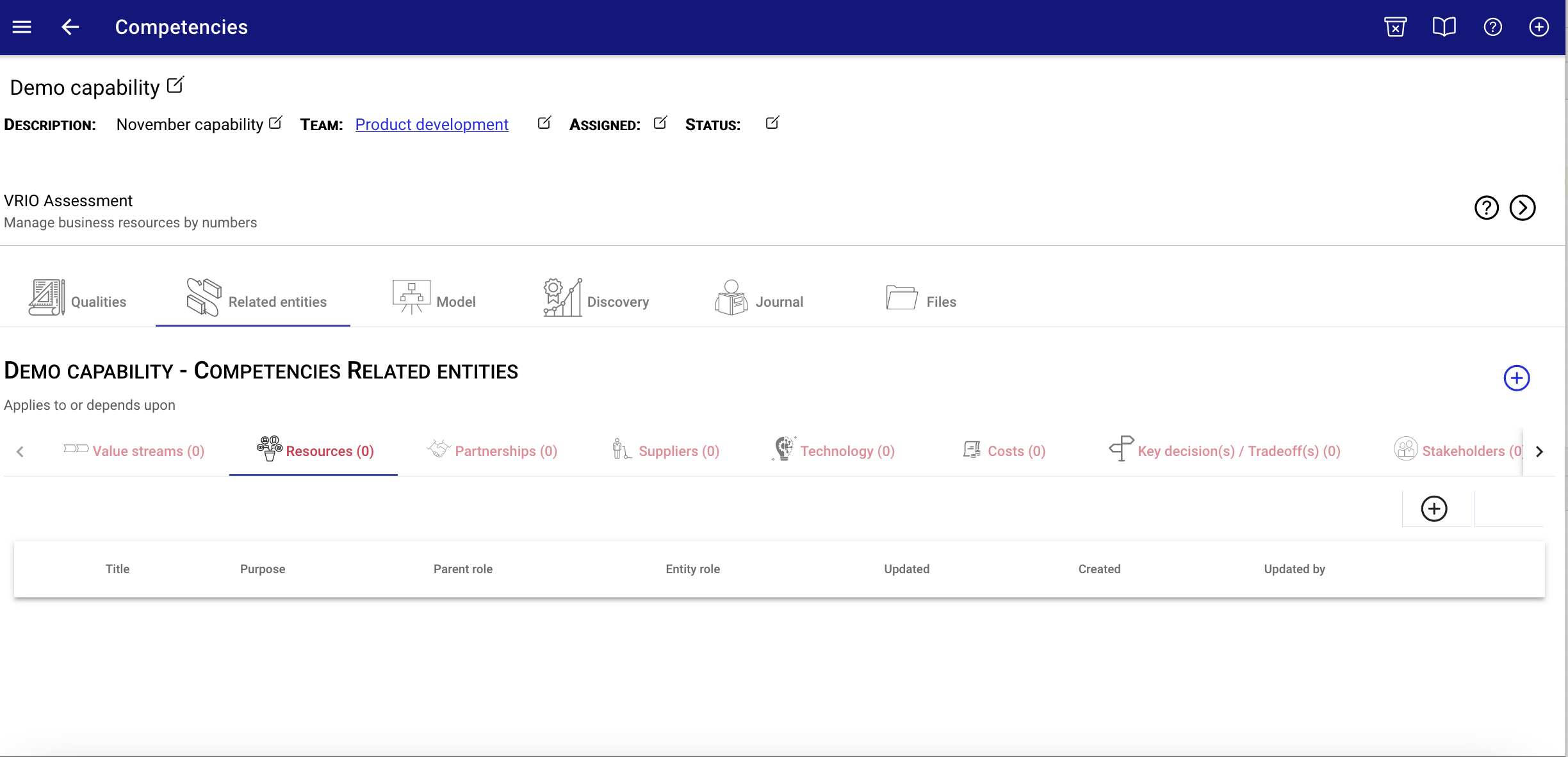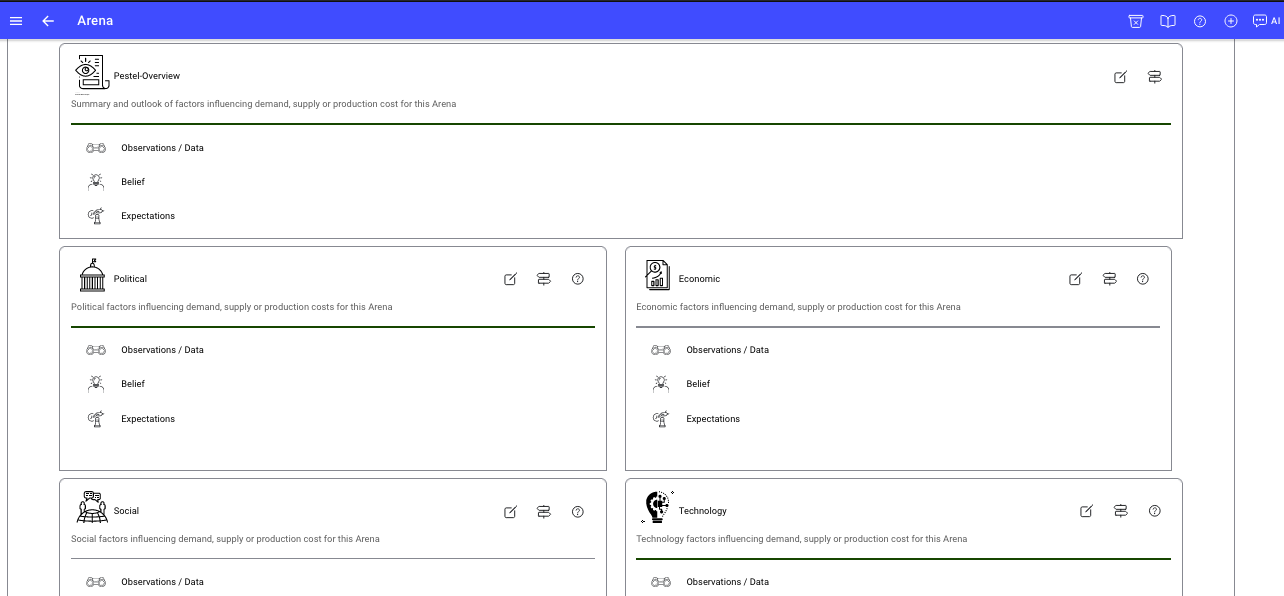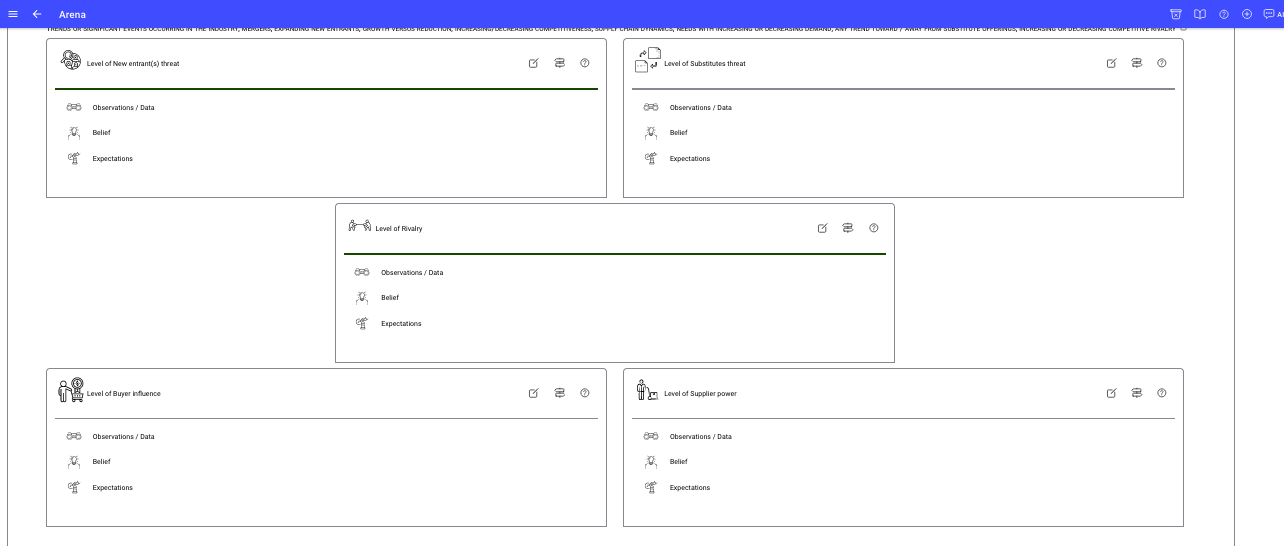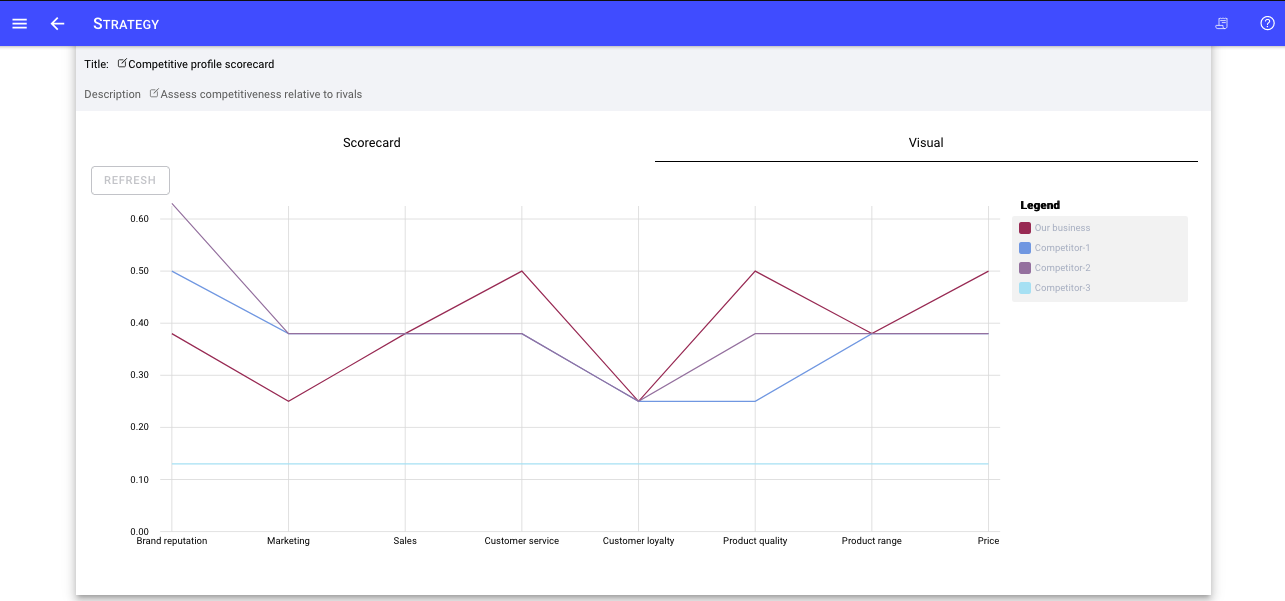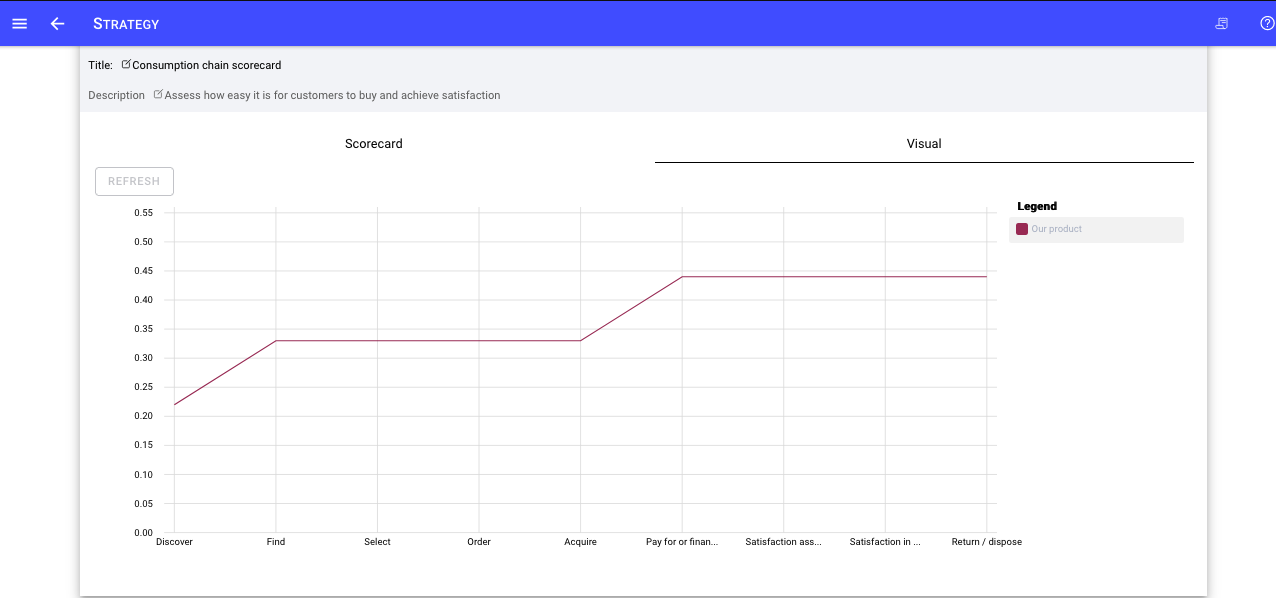No business or group of people can be competent in all things, hence it is valuable to identify
what are the differential competencies available in an organization
These are the organizational strengths
what competencies are necessary to provide an effective value chain
ensure there are policies, procedures and actions to ensure Strategic competencies (those which deliver differential value today and into the foreseeable future) are nurtured sustained or evolved over time
In this section
-
Define a (strategic) competency
-
Use the StrategyCAD competency canvas to identify, benefit from and nurture a competency.
-
Introduce the potential to use competencies to reverse engineer a value proposition.
A previously introduced a competency is "Know-how" - Expertise an organization has that enables it to deliver value to the community and stakeholders it serves. For example, in their book Playing to Win: How strategy really works A.G. Lafely and Roger Martin identified the competencies or strengths they identified for Proctor and Gamble. These were:
Consumer understanding
Brand building
Go-to market
Global scale
Examples
Consumer understanding: If Proctor and Gamble anticipate they understand their consumers motivation and needs better than any of their rivals, that expertise gives them the advantage.
Brand building: If Proctor and Gamble anticipate they surpass rivals in brand building, then consumers, more readily recognize and trust Proctor and Gamble brands, increasing willingness to buy and pay, thus increasing advantage for Proctor and Gamble.
Go to market: During A.G. Lafely's tenure as CEO, Proctor and Gamble
introduced 14 products that each exceeded 1 billion USD in revenue, whilst earnings per share
grew at 12% per annum.
Procotor and Gambles' Go to market capability combined with its others enabled this type
of advantage to be generated.
Global scale: Global scale of course allows Proctor and Gamble to generate advantage because the same product can be introduced via Global channels into a much larger market. Alternatively, a product non-viable in one market, can be viable in another. Global scale is a source of advantage for Proctor and Gamble.
Proctor and Gamble are an enduring and multi-billion dollar corporation and hence these capabilities are sophisticated. However, more important, it is these competencies that are used by Proctor and Gamble to define and deliver new and existing value propositions and generate competitive advantage.
Competencies defined
Strategic competencies are the know-how that gives your organization the edge in the creation and delivery of a value proposition or value propositions.
If your business is a younger business, of course, you will not have the competencies of a decades old established global business like Proctor and Gamble. Your business competencies maybe younger and/or limited. However, your business is not Proctor and Gamble, you just need sufficient competencies to bring your value proposition to life in your market and expand both over time. Hence, in your strategy formulation, using the Strategic choices canvas and the Competencies canvas you can
identify which competencies are necessary
to what extent they exist and;
how you will nurture them to create and sustain advantage
Growing competencies specifically necessary to deliver and sustain your advantage in delivery of your value proposition can prevent wasted effort from developing non-differential competencies. Moreover, it creates clarity and focus on nurturing competencies that allow development of and sustaining success.
-
Competencies can be added via the Related entities tab for any entity, but most particularly on the Value Integrated value delivery canvas.
If the competency exists then you can link to it using the link icon
 .
.
Otherwise, if the competency does not exist tap the add icon (far right). A dialog box will appear. Record the title, description and team that will own the nurturing the competency and submit. Once the competency is created then you can link to that competency using the link icon .
.

Adding a competency from the Value delivery canvas -
Competencies can be added from the Value propositions canvas. If the competency exists then you can link to it using the link icon
 .
.
Otherwise, if the competency does not exist tap the add icon (far right). A dialog box will appear. Record the title, description and team that will own the nurturing the competency and submit. Once the competency is created then you can link to that competency using the link icon .
.
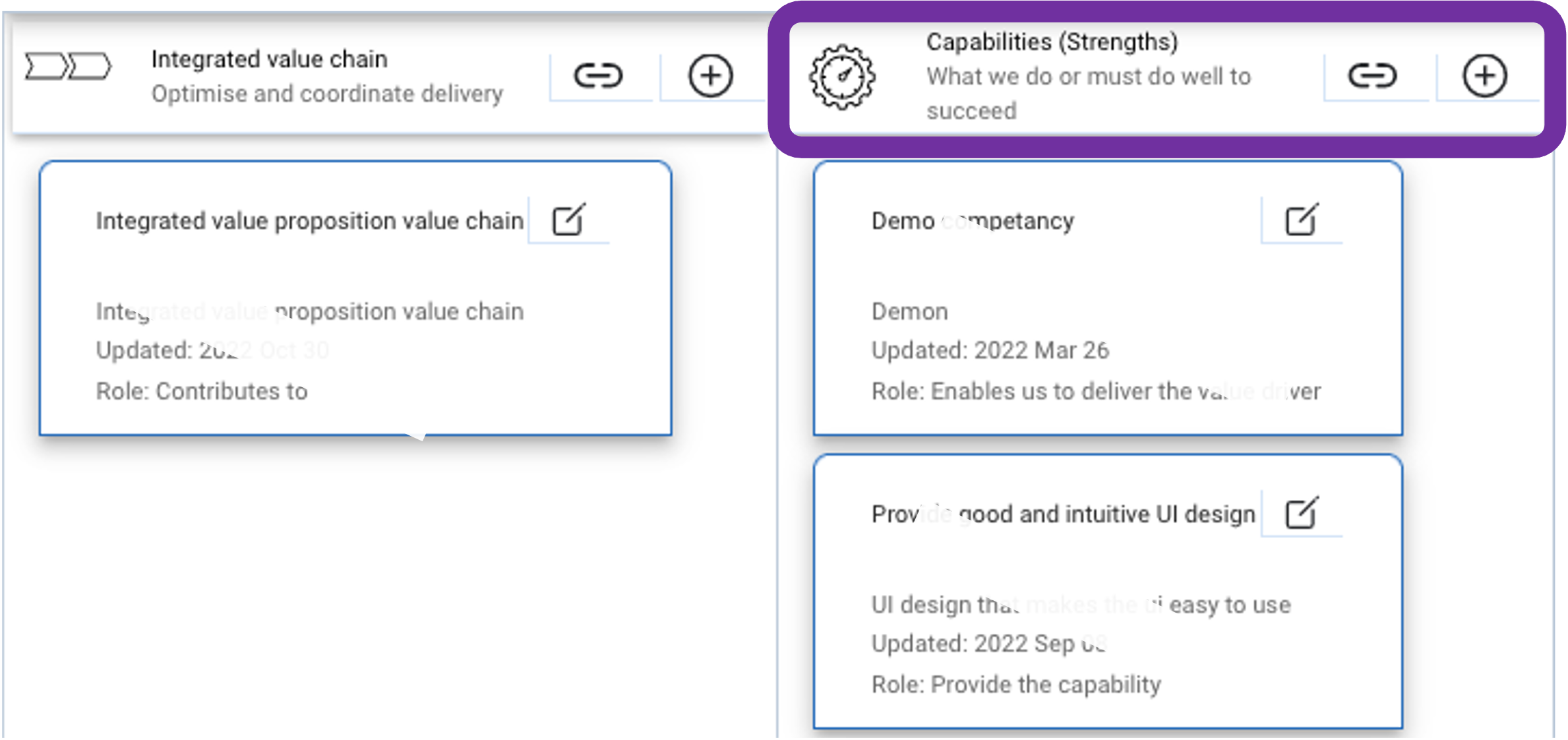
Adding a competency from the Value propositions (Strategic choices) canvas -
From the competency list view.
The competency list view, lists all the competencies available to your business, along with who owns those competencies.
To access the Competency list view open the side menu Expand the Resources menu option and click or tap competencies.
Expand the Resources menu option and click or tap competencies.
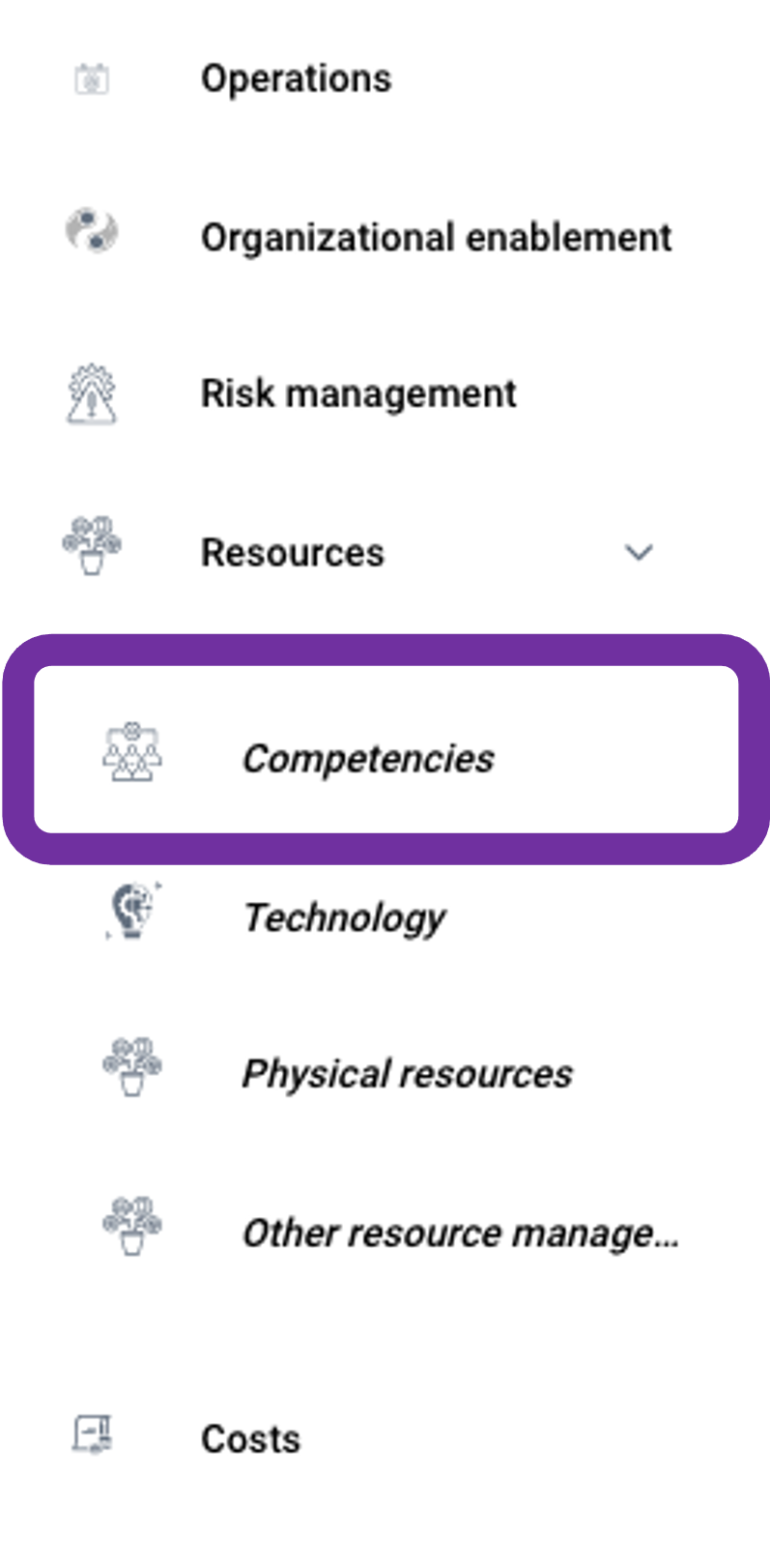
Adding a competency from the side menu
In the first part of the canvas you can define the purpose and success criteria for the competency. Why does it exist or needs to exist? What criteria indicates its success and the objectives and priority that enable that.

VRIO is a framework for maximizing the value your business obtains from its know-how. The acronym stands for
-
Valuable - the Competency must enable your business to produce an outcome of value.
-
Rare - the Competency must not be readily available to the industry i.e consider Amazons distribution competency based upon its logistics resources or NVIDIA's speed in semi-conductor design, or KFC's secret recipe. These Competencies are not commonly available to potential rivals.
-
Imitable - the Competency is more of an advantage when it is difficult for rivals to imitate.
-
Organized - the Competency is more of an advantage when your business has the processes and systems to apply the Competency to produce outcomes of value. For example if a business owns a diamond mine, but has not the resources to fetch the diamonds, it has a valuable, rare and difficult to imitate resource, but its does not derive value from it without being organized to use it.
For a Competency to offer a competitive advantage it ideally meets each of these criteria.
In the next part of the canvas you can identify how you nurture the competency to continue to:
Grow its value or expand the expertise in the competency
Preserve or enhance its' rarity
Add any policies or activities to make it difficult to imitate
Identify opportunities to best utilize the competency
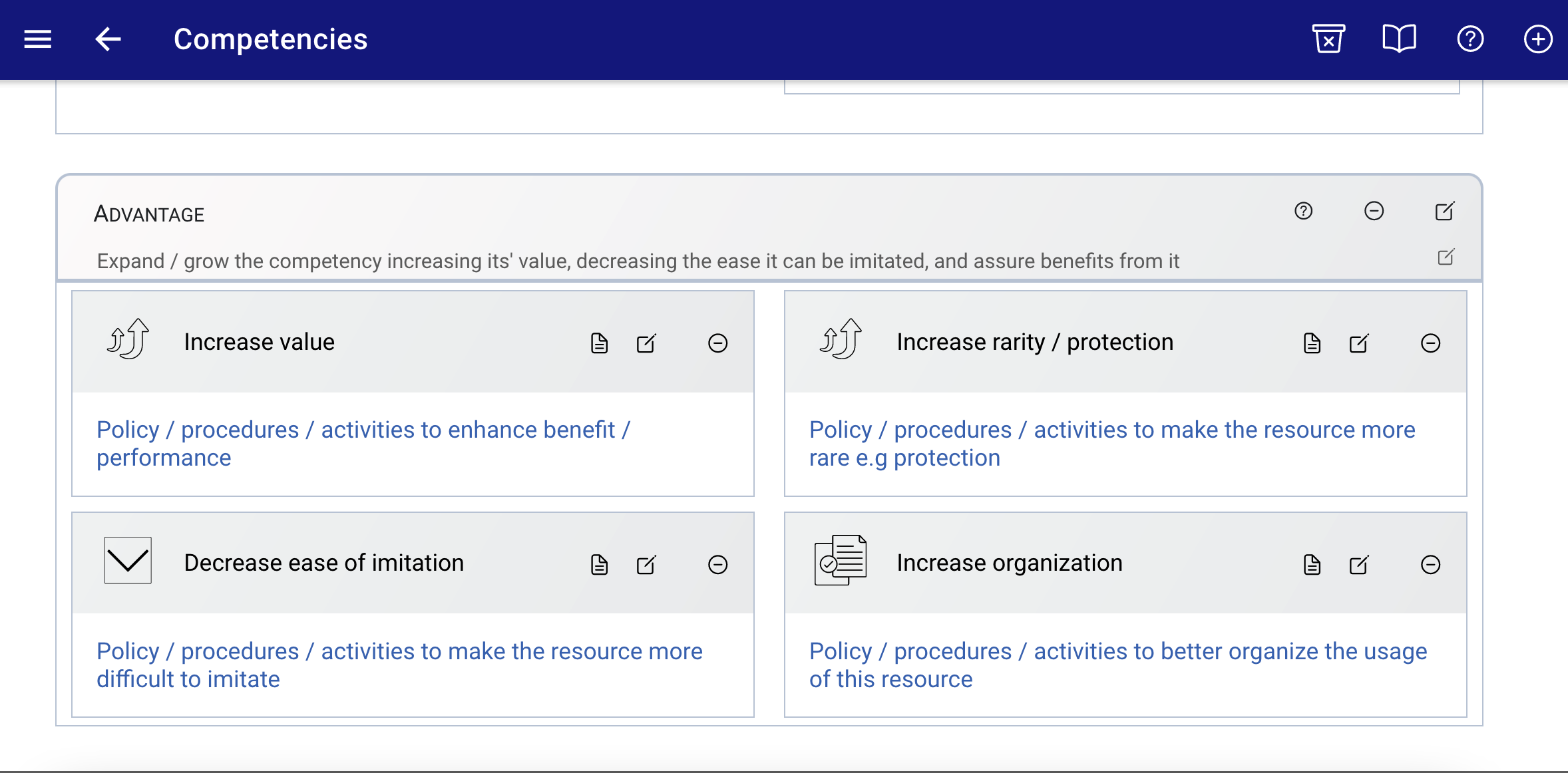
Enablers
Having defined the competency, created the competency vision and VRIO aspects. You can now capture the enablers of the competency, the necessary inputs to enable the competency.
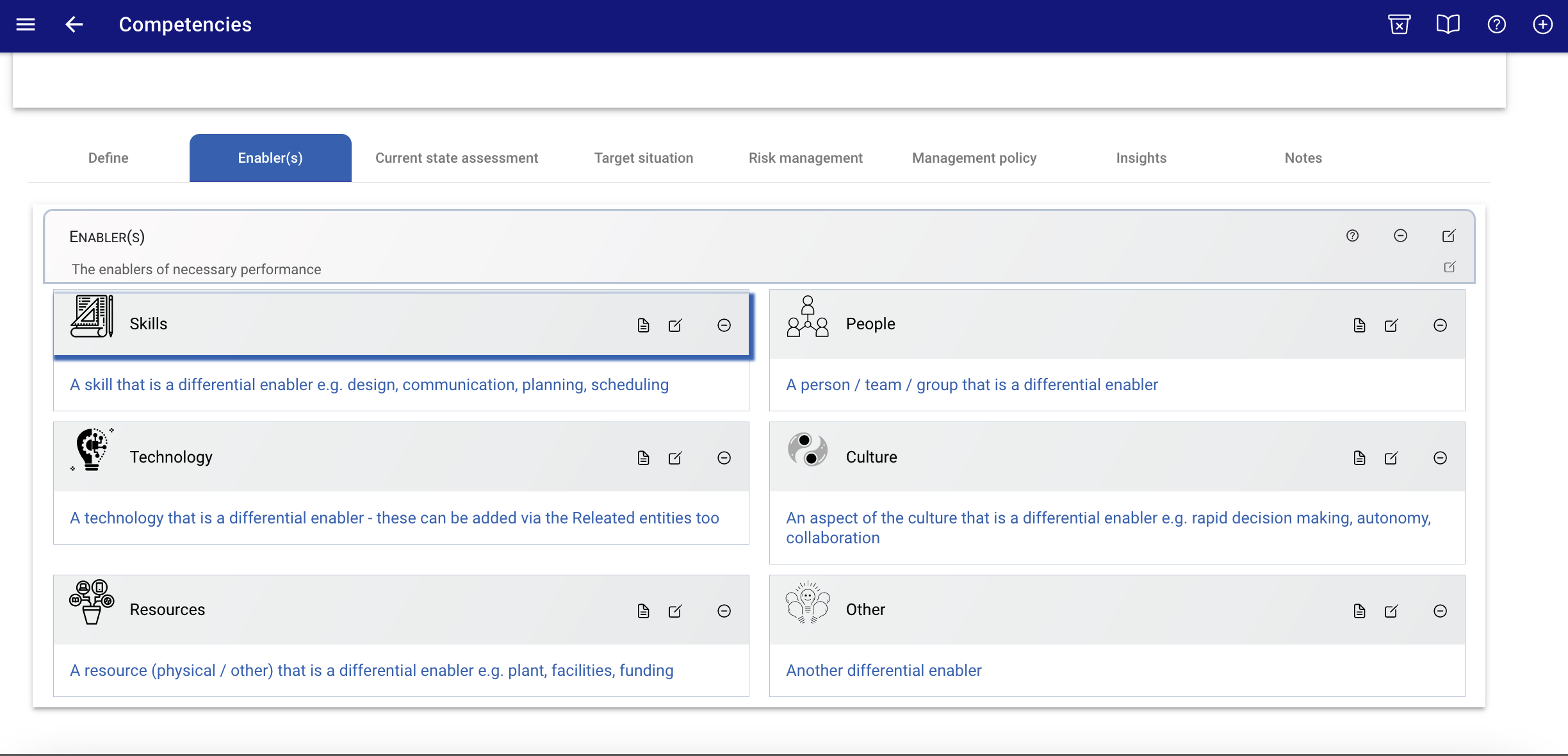
The default considerations are Skills, People, Technology, Culture, Resources and Other. From a strategy or design perspective you can identify which of these are important enablers of the competency. If one does not and another not present does you can rename that block. For example if you decide it is not so much a culture enabler but a policy then you can rename Culture to Policy and record the details in there.
Current state assessment
The current state assessment allows you and your team to consider the current state of the competency as it relates to:
Capability to meet the current delivery needs
Capability to meet anticipated future delivery needs based upon opportunities and threats identified from the opportunity and threat assessments.
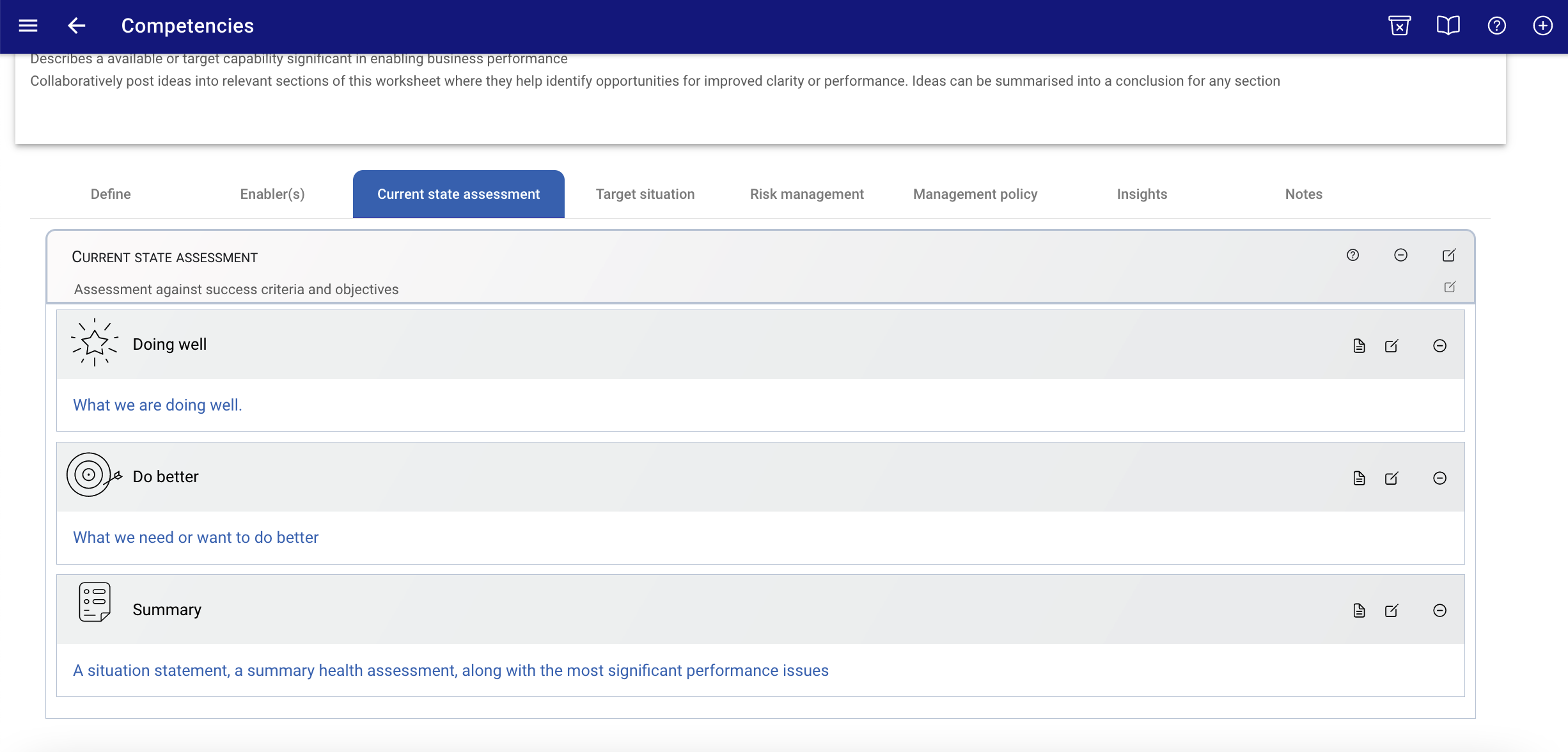
The default assessment attributes capture what is being done well, what can be done better. Finally, there is an opportunity to provide a summary which might include identification of differentiation for the capability to meet current modes of operations versus future.
Target situation
The target situation provides an opportunity to describe what the future looks like when the vision associated with the competency is fulfilled, with an awareness of opportunities and threats.
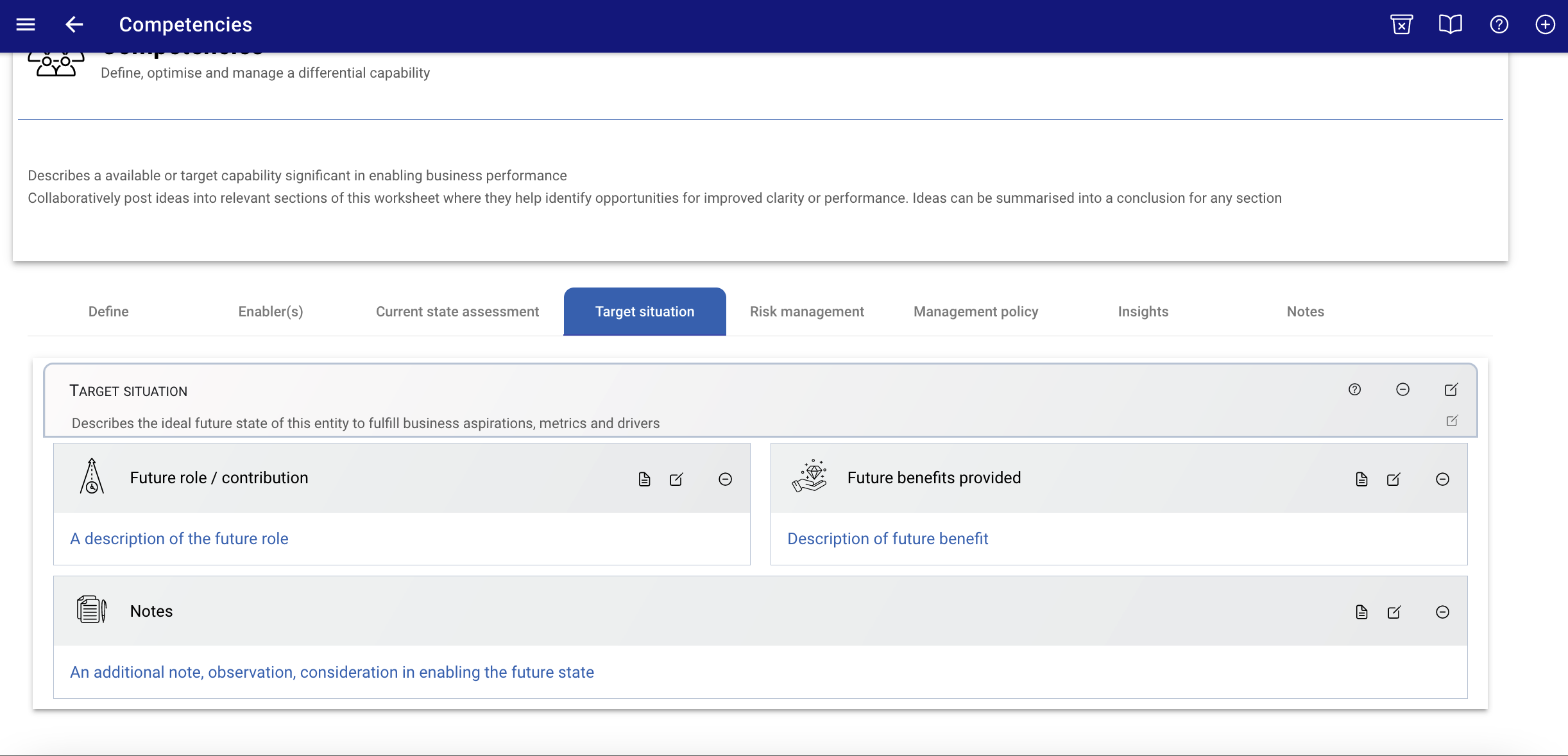
Risk management
Provides the opportunity to identify and manage any risks associated with competency. This might include loss of significant resources, skills, change in technology or any of the enablers of the competency. These risks are managed by the team that owns the competency.
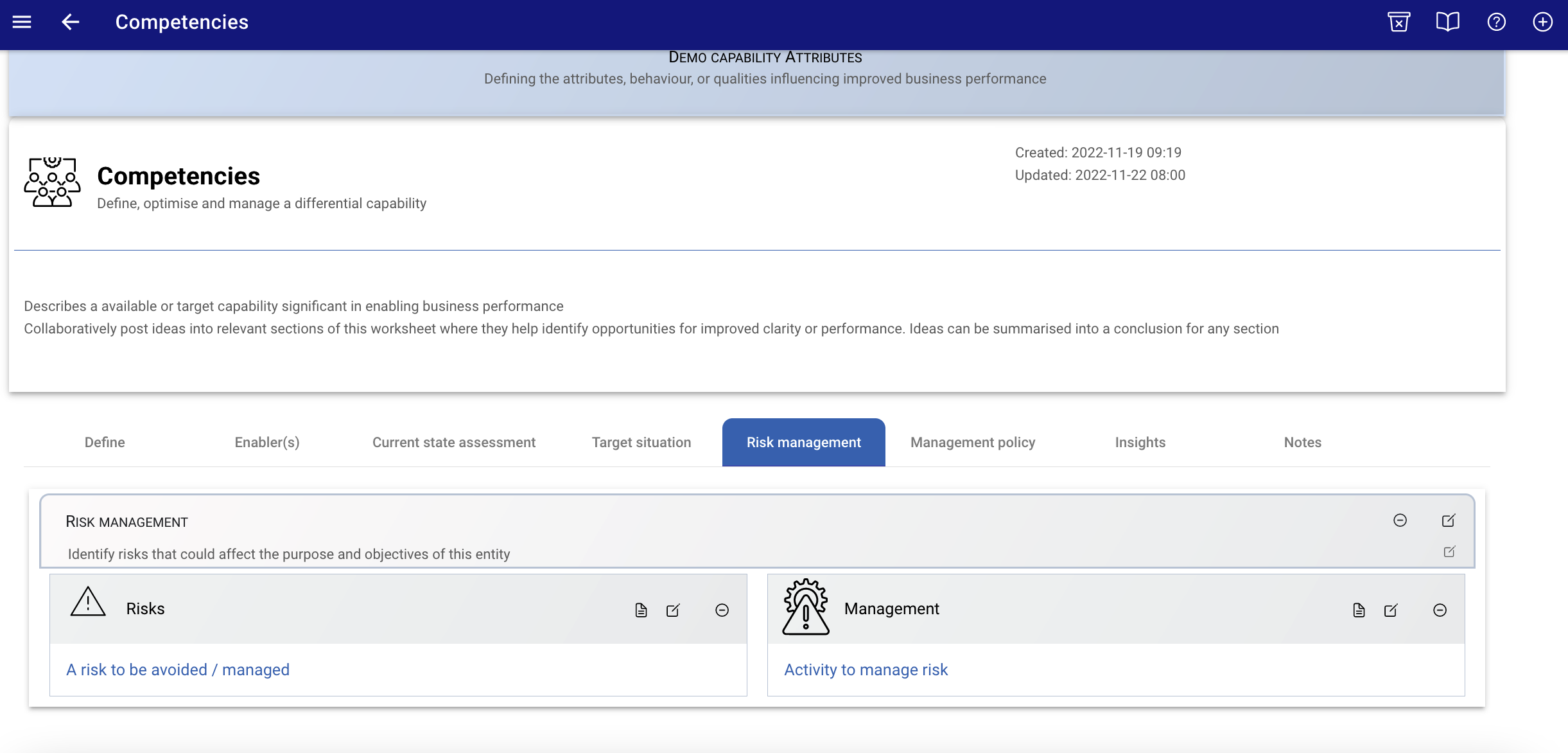
Management policy
With considerations of the definition, current state, potential future state and risks associated with the competency, this section defines the management policy to enable the nurturing of the competency.
The policy is action oriented indicating:
What activities or resource need to be grown i.e. start doing, do or acquire more of.
What activities or resource need to be sustained - neither more nor less
What activities or resource can be reduced or eliminated if necessary to provide capacity for the additional activities or resources to be grown.
Related entities allows you to build relationships between the competency and any other specific entities. For example, if the competency can be modelled as a value stream, you can create the value stream to capture the value creating steps in the competency and link it in the related entities tab.
Related entities also allows you to build relationships between the competency and managed costs, resources or any other managed entity in the system. The competency may apply to or depend upon the entities you relate it to. You can use this to build out a model of how the competency relates to other managed entities.
